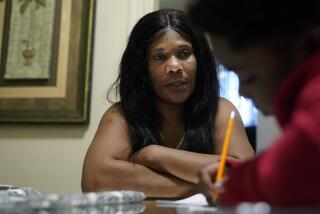Science / Medicine : Reading Disabilities Mislabeled
- Share via
Schools are up to four times more likely to label boys as reading-disabled than they are girls. But when standard research criteria are used to diagnose reading disability, the problem is found to occur about equally in both sexes, scientists reported last week in the Journal of the American Medical Assn.
Researchers at Yale University and the University of Texas evaluated 445 Connecticut schoolchildren whose intelligence, behavior and academic progress were regularly assessed from kindergarten through the third grade. When reading disability was defined as a discrepancy between IQ and performance on a reading test, it was found in about 9% of second- and third-grade boys and in 6% to 7% of girls--not a statistically significant difference. But teachers identified 10% to 14% of boys in those grades as reading-disabled, compared to only 3% to 4% of girls.
Children whom schools considered reading-disabled but whose tests did not confirm the diagnosis were significantly more likely than average to show behavior problems. Conversely, children whose tests indicated a reading disability but who had been “missed” by schools were significantly less likely than average to be classroom troublemakers.






